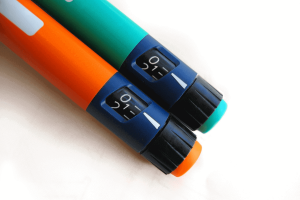
All About Artificial Sweeteners
Benefits & Concerns
When you have diabetes, learning how to satisfy your sweet tooth can be challenging. Many people with diabetes opt for artificial sweeteners over the real deal. Also called low-calorie or non-nutritive sweeteners, these sugar substitutes may seem like the ideal solution for people with diabetes who want to enjoy a sweet treat. Here are some of the benefits of artificial sweeteners:
0 calorie, carb, and fat content
An alternative to regular sugars, which cause your blood sugar to spike
Readily available and found in many mainstream products
Despite these benefits, there is some question about whether artificial ingredients are truly a healthier option. Read on for four popular types of artificial sweeteners on the market today, along with some pros and cons of each one.
Aspartame
Used in many products today, this is the most popular artificial sweetener. It is commonly found in “low-calorie” or “diet” food and drinks–this includes sodas, yogurt and chewing gum. Aspartame is more than 200 times sweeter than natural sugar, according to WebMD. One benefit of this sugar substitute is that the body can break it down into chemicals that are found in natural foods, such as meat, fruits, and vegetables. However, aspartame contains a chemical called phenylalanine, which can cause problems in people who have the metabolic disease, phenylketonuria.
Saccharin
This is the oldest artificial sweetener. According to Diabetes Daily, it started being produced in 1878. Saccharin is found in baked goods, including cakes, cookies, and pies that are made at your local grocery store. Saccharin is also found in coffee sweeteners, such as Sweet N’ Low and Sugar Twin. While this sugar substitute may be a delicious, zero-calorie way to sweeten your favorite foods and drinks, some say saccharine may cause cancer. Although, according to the National Cancer Institute, researchers haven’t found any links yet between saccharin and increased cancer rates.
Sucralose
This is the main ingredient in Splenda, a sweetener that can be used instead of sugar when cooking at home. According to WebMD, sucralose is created from natural sugar by scientists in a chemical process. You can also find this artificial sweetener at the grocery store in low-calorie dairy items and fruits canned in syrup. According to the American Diabetes Association, some studies have found that sucralose may affect the body’s reaction to sugar, leading to a potential worsening of diabetes symptoms.
Stevia
This one is a natural sweetener that comes from the Stevia plant. In 2008, the U.S. Food and Drug Administration (FDA) approved parts of the plant to be used as a low-calorie sugar substitute. The FDA has not approved the entirety of the plant for safe consumption.
So… Are They Safe?
Despite a few drawbacks, the FDA has approved each of these artificial sweeteners, meaning they are safe to consume. Remember, that while sugar substitutes won’t raise your blood sugar levels, the foods they are in still have carbs and calories. Whether you choose to eat foods sweetened with natural sugar or a substitute, it’s important to remember that maintaining a healthy diet is one of the best ways to control your diabetes.
Tip: If you are wanting to eat a healthier diet, a great place to start is by reducing the number of sweets and increasing your servings of fruits and vegetables!
Summary
There are several healthier sweetener alternatives to sugar that individuals with diabetes tend to go to that won’t raise their blood sugars. You should always aim to consume these sugar substitutes in moderation only. There still needs to be more research on sugar alternatives. In the meantime, focus on a healthy, balanced diet.
Disclaimer Statement: This is for educational purposes only. This is not medical advice. For individual medical advice, contact your healthcare practitioner.




